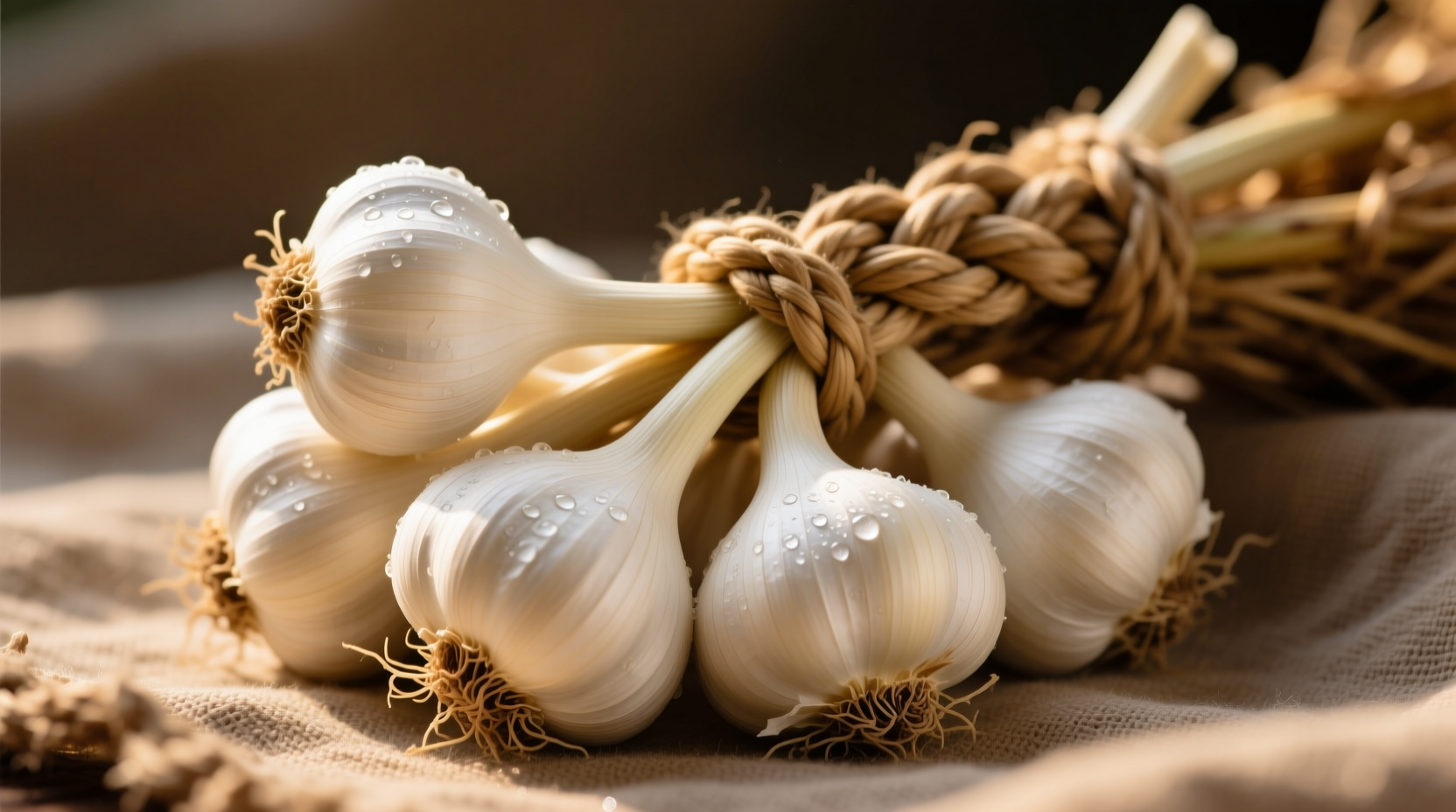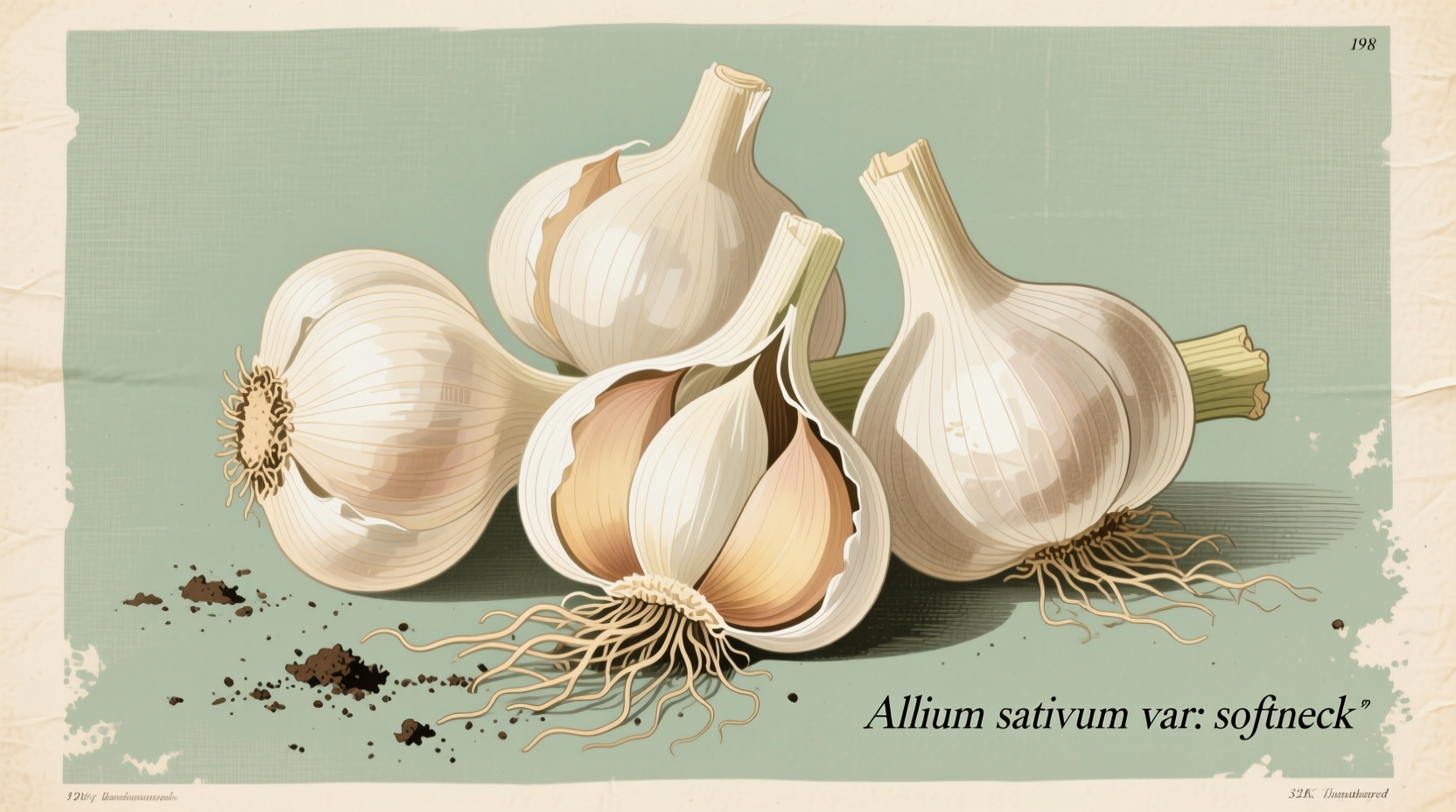When you reach for garlic in your kitchen, understanding the difference between soft neck and hard neck varieties transforms your cooking experience. Soft neck garlic dominates commercial markets, representing approximately 80% of globally traded garlic according to USDA agricultural reports. Its pliable stalks never form the rigid central stem characteristic of hard neck varieties, creating distinctive culinary and practical advantages that home cooks and professional chefs consistently leverage.
Why Soft Neck Garlic Matters in Your Kitchen
Unlike its hard neck counterpart, soft neck garlic adapts seamlessly to diverse cooking applications while offering exceptional shelf life. The absence of a central stalk allows for more cloves per bulb—typically 12-20 compared to hard neck's 4-12—and creates a more consistent shape that peels easier. These practical advantages explain why soft neck varieties like Silverskin and Artichoke dominate supermarket shelves worldwide.
Soft Neck vs Hard Neck: Key Differences at a Glance
| Characteristic | Soft Neck Garlic | Hard Neck Garlic |
|---|---|---|
| Stalk Structure | Flexible, never hardens | Rigid central stalk |
| Storage Duration | 9-12 months | 3-6 months |
| Cloves Per Bulb | 12-20 (concentric layers) | 4-12 (symmetrical pattern) |
| Braiding Capability | Excellent | Impossible |
| Flavor Profile | Milder, more consistent | Stronger, more complex |
Understanding Soft Neck Subtypes
Within the soft neck category, two primary varieties dominate culinary applications. Silverskin garlic, the most common commercial type, features thin, silvery-white wrappers and exceptional storage capabilities—often lasting 12 months or more. Its flavor remains consistently mild, making it ideal for raw applications like aioli and salad dressings where harsh garlic notes would overwhelm other ingredients.
Artichoke garlic, named for its layered bulb appearance resembling an artichoke, offers slightly stronger flavor with subtle nutty undertones. This variety typically contains more cloves than Silverskin and performs exceptionally well in roasting applications where its complex sugars caramelize beautifully. According to Cornell University's agricultural extension program, Artichoke varieties account for approximately 60% of soft neck garlic production in temperate climates.

Optimal Storage Techniques for Maximum Shelf Life
Proper storage unlocks soft neck garlic's legendary longevity. Maintain bulbs in a cool (60-65°F), dark location with moderate humidity (60-70%)—a pantry typically provides ideal conditions. Never refrigerate whole bulbs, as moisture triggers premature sprouting. The flexible stalks allow for traditional braiding, which not only creates attractive kitchen decor but also promotes air circulation that extends freshness.
When individual cloves show signs of drying or sprouting, separate them from the bulb immediately. These cloves remain perfectly usable but should be consumed within 2-3 weeks. For long-term preservation, soft neck garlic excels in oil infusions and vinegar pickling—methods that capture its delicate flavor while creating versatile pantry staples.
Culinary Applications: When to Choose Soft Neck
Soft neck garlic shines in applications requiring subtle, consistent garlic flavor without overwhelming other ingredients. Its milder profile makes it the preferred choice for:
- Raw preparations like aioli, vinaigrettes, and garlic bread where harsh notes would dominate
- Long-cooked dishes where hard neck varieties might become bitter
- Commercial food production requiring consistent flavor batch-to-batch
- Situations requiring extended storage without flavor degradation
Professional chefs particularly value soft neck garlic for sauces and soups where prolonged cooking would intensify hard neck varieties beyond desirable levels. The consistent clove size also streamlines kitchen prep, reducing waste during peeling and mincing.
Selecting Quality Soft Neck Bulbs
When choosing soft neck garlic at market, look for firm bulbs with tight, papery wrappers showing no signs of moisture or mold. The neck should remain flexible but not rubbery—excessive softness indicates aging. Avoid bulbs with visible sprouting or soft spots, which accelerate spoilage. Larger bulbs typically contain more cloves but offer no flavor advantage over smaller counterparts.
Unlike hard neck varieties that indicate harvest readiness through flowering scapes, soft neck garlic provides fewer visual maturity cues. This explains why commercial growers rely on precise planting schedules—typically harvesting soft neck varieties in late summer when approximately 40% of leaves have naturally yellowed, according to UC Davis agricultural research.
Growing Soft Neck Garlic: Essential Considerations
Gardeners in warmer climates (zones 7-10) find soft neck varieties particularly rewarding. These garlic types thrive with less winter chill than hard neck varieties, making them suitable for southern regions where hard neck garlic often fails to develop properly. Plant cloves 2-3 inches deep, 4-6 inches apart in well-draining soil approximately 4-6 weeks before your first expected frost.
Unlike hard neck varieties that require scape removal to maximize bulb development, soft neck garlic needs no such intervention. The flexible stalks naturally channel energy to bulb formation without flowering distractions. Harvest when approximately half the leaves have yellowed, then cure bulbs in a shaded, well-ventilated area for 2-3 weeks before storage.











 浙公网安备
33010002000092号
浙公网安备
33010002000092号 浙B2-20120091-4
浙B2-20120091-4